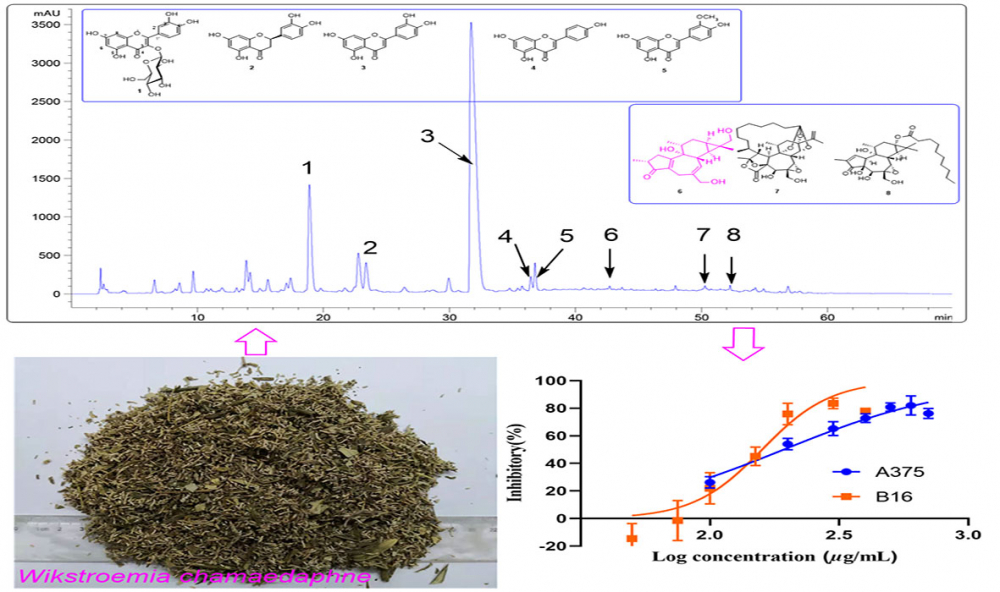JOURNAL 2343
Records of Natural Products
Year: 2022 Issue: 6 November-December
p.559 - 571
Viewed 3808 times.
-
Yuan Li

-
Chunyan Zhang

-
Yiwen Nie

-
Ruifeng Zhang

-
Xiaoxiang Zhai

-
Yanjuan Duan

-
Wei Fan

-
Weiying Gu

-
Kourong Shi

-
Lan Luo

-
Jianyong Zhu

GRAPHICAL ABSTRACT

ABSTRACT
The ethyl acetate extraction (WCE) of Wikstroemia chamaedaphne Meisn on the viability of melanoma cell lines B16 and A375 were evaluated. The WCE exhibited a potent cytotoxic against B16 and A375 with IC50 values of 156.2 and 192.8 µg/mL, respectively. Cell migration was assessed using a wound healing assay. The WCE caused cell cycle arrest in the G0/G1 phase in B16 cells and the S phase in A375 cells, according to cell cycle analysis. Flow cytometric analysis revealed that WCE promoted apoptosis in B16 and A375 cells in a dose-dependent manner. Chemical analysis of WCE resulted in the isolation of a new diterpenoid, wikstchalin A (6) with five known flavonoids (1-5) and two known diterpenoids (7 and 8). Spectroscopic analysis revealed their structures, and CD analysis revealed the absolute configurations of 6. The absolute structure of pimelotide A (7) was firstly confirmed by single-crystal X-ray diffraction. The cytotoxicities of all the compounds (1−8) were evaluated against B16 cell lines. Compound 8 was more active than the positive control, dacarbazine (IC50 300 μM), in terms of cytotoxicity against B16, with an IC50 value of 7.9 μM.
KEYWORDS- Wikstroemia chamaedaphne
- flavonoid
- diterpenoid
- antitumor activity